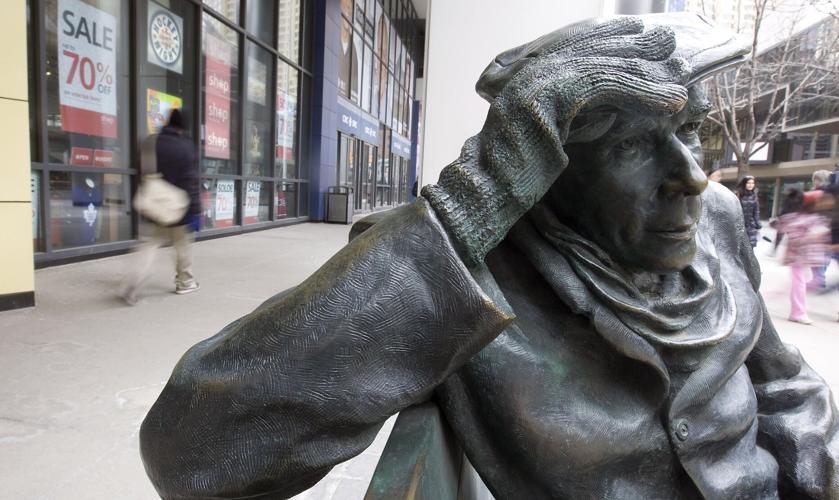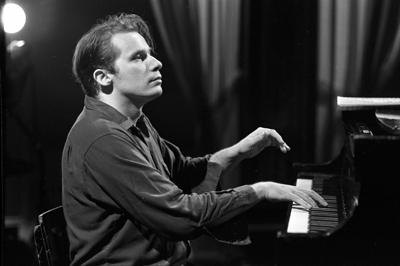Thirty-two years after its release, a landmark of Canadian cinema has returned.
After languishing in legal limbo for several years, ŌĆ£Thirty Two Short Films About Glenn Gould,ŌĆØ director Fran├¦ois GirardŌĆÖs 1993 biopic about the legendary pianist, was just released on Blu-ray and UHD in a 4K restoration (and is streaming on Apple TV Plus) by the Criterion Collection. It marks Girard as only the second French-Canadian filmmaker to join the esteemed label, following Claude Jutra (ŌĆ£Mon oncle Antoine”).
Co-written by Girard and Don McKellar and starring Colm Feore, who never touches a single piano key, the movie unfolds in 32 vignettes (one of which is the closing credits sequence) ŌĆö evocative short takes inspired by the structure of BachŌĆÖs ŌĆ£Goldberg Variations,ŌĆØ a work Gould famously recorded twice: first in 1955, launching his international career, and again in 1981. Both interpretations are considered definitive recordings, offering radically different takes on the same composition ŌĆö which could also be said of the film itself.
Girard conceived the format as a cinematic suite: brilliant, self-contained chamber pieces that echo the eccentric rhythms, solitude, perfectionism and wit that defined GouldŌĆÖs performances and personality.
The film swept the Genie Awards, winning prizes for best editing, cinematography, direction and picture. In ╬┌č╗┤½├Į, it ran for months; in Paris, it played at a single theatre for nearly a year.
Taking on the life of Glenn Gould ŌĆö especially so soon after his death in 1982 ŌĆö was no small feat. In ╬┌č╗┤½├Į, where Gould loomed large as a national icon, the idea of making a film about him felt almost unthinkable. In a new interview included in the Criterion release, fellow director Atom Egoyan recalls being intimidated by the project.
But Girard, a French-Canadian outsider, approached Gould without the same cultural reverence. ŌĆ£I didnŌĆÖt grow up with the figure of Glenn Gould as an emblematic, iconic figure,ŌĆØ he told the Star. ŌĆ£I came to his music with more distance and less intimidation. I was fearless. I knew what to do with it.ŌĆØ
As a ╬┌č╗┤½├Į native obsessed with Gould since his teenage years, McKellar came from the opposite direction. ŌĆ£I didnŌĆÖt know a piano could have such a distinctive voice,ŌĆØ he told the Star. ŌĆ£I didnŌĆÖt even quite understand how an artist could transmit a voice through a piano like he did.ŌĆØ
McKellarŌĆÖs fascination deepened when he took a university course on GouldŌĆÖs esthetics at U of T. ŌĆ£Like so many people, I was captivated by his persona and his allure,ŌĆØ he said. ŌĆ£It wasnŌĆÖt just the music. It was inseparable from his sort of mysterious loner persona.ŌĆØ
Though he withdrew from the concert stage in 1964 ŌĆö a moment dramatized in the vignette called ŌĆ£The L.A. ConcertŌĆØ ŌĆö Gould remained remarkably present in Canadian life, especially through his work with the CBC.
One of his most memorable screen appearances was in ŌĆ£Glenn GouldŌĆÖs ╬┌č╗┤½├Į,ŌĆØ a 1979 documentary directed by John McGreevy. In it, Gould leads viewers on a personal, often hilariously reluctant tour of the city he called home ŌĆö while openly admitting heŌĆÖs rarely set foot in many of the locations.
ŌĆ£ItŌĆÖs so great,ŌĆØ said McKellar, who drew inspiration from McGreevyŌĆÖs film. ŌĆ£Not only about Gould, but itŌĆÖs just one of the best views of ╬┌č╗┤½├Į in that era. Some of the places (Gould) visits, like those suburban streets, heŌĆÖs able to capture unique aspects of the city that were real, but not the kind of thing tourism boards promoted.ŌĆØ
Still, Gould visited some ╬┌č╗┤½├Į landmarks. He wondered why anyone would attend the CNE, recalling that his parents wouldnŌĆÖt take him: ŌĆ£I don’t believe they felt that the Miss Dairy Princess Contest was likely to corrupt the morals of the young,ŌĆØ he says in a film that can only be described as an anti-travelogue. ŌĆ£But they did feel that every contagious disease known to man lurked menacingly and invisibly in the late summer air.ŌĆØ
ŌĆ£He was not a fan of the CNE,ŌĆØ McKellar, told the Star with a laugh.
Scattered across the city are traces of Glenn GouldŌĆÖs quiet legacy ŌĆö places he lived, worked, wandered and transformed. Here are a few notable ones.
Birthplace: 32 Southwood Dr.
Born at home in 1932, Gould learned the piano under the guidance of his mother. A historical plaque commemorates the site, noting his debut as a soloist with the ╬┌č╗┤½├Į Symphony Orchestra at age 14.

Glenn Gould’s father Herbert at 32 Southwood Dr., where the pianist spent his early years.
Andrew Stawicki/╬┌č╗┤½├Į Star file photoThe Glenn Gould Studio and Statue: 250 Front St. W.
Tucked inside the CBC Broadcasting Centre, the studio that bears his name remains an active space for classical performances ŌĆö and houses GouldŌĆÖs childhood piano, a Chickering & Sons upright. Outside, a bronze statue captures him in a contemplative pose, bundled in his familiar overcoat, seated on a bench.

The statue of Glenn Gould sits outside the CBC Building on Front Street.
Steve Russell/╬┌č╗┤½├Į Star file photoŌĆ£I always think of Glenn when I pass his old house in the Beaches or see the parkette on St. Clair near his old apartment,ŌĆØ Egoyan told the Star. ŌĆ£But mostly, IŌĆÖm thankful that I can sit beside him outside the CBC. I love to know that his old piano is somewhere inside the building.ŌĆØ
Residence: 110 St. Clair Ave. W.
For much of his adult life, Gould lived in Park Lane Apartments, a nine-storey Art Deco building just west of Avenue Road. As depicted in the film, he kept odd hours, calling collaborators deep into the night.
Massey Hall: 178 Victoria St.
Gould made his orchestral debut at Massey Hall in 1946, performing BeethovenŌĆÖs Piano Concerto No. 4 with the ╬┌č╗┤½├Į Symphony Orchestra. Though he would play there again, Gould never cared for its acoustics, favouring the more intimate setting of the Eaton Auditorium at Yonge and College. Still, Massey Hall remains one of the few surviving concert spaces in the city where Gould played live.

In ╬┌č╗┤½├Į, Glenn Gould preferred to play the intimate Eaton Auditorium.┬Ā
CBC Radio and Hampton Court Hotel: Jarvis Street
Across from CBCŌĆÖs old radio headquarters at 354 Jarvis stood the Hampton Court Hotel, where Gould kept a longtime residence. ŌĆ£My girlfriend worked there,ŌĆØ recalled Niv Fichman, who produced ŌĆ£Thirty Two Short Films About Glenn Gould, ŌĆ£so IŌĆÖd hang around for the free meals.ŌĆØ

CBCŌĆÖs old radio headquarters at 354 Jarvis St. in┬Ā1965.
One winter’s night in the early ŌĆÖ80s, the pair spotted Gould emerging from the hotel in his trademark cap and long coat, lugging a garbage bag over his shoulder. He tossed it into the trunk of his Cadillac and drove off. In a decommissioned Bell Canada van, they followed him across the city for nearly an hour until he stopped in Rosedale, dropped the bag in a bus shelter garbage can, and drove off. ŌĆ£We ran and stole it,ŌĆØ Fichman said, laughing. ŌĆ£It was full of old copies of the Globe and Mail and grapefruit peels. ThatŌĆÖs the closest I ever got to Glenn Gould.ŌĆØ

The grave of Glenn Gould at Mount Pleasant Cemetery in ╬┌č╗┤½├Į.┬Ā
Steve Russell/╬┌č╗┤½├Į Star file photoGravesite: Mount Pleasant Cemetery, Section 38, Lot 1050
After his death in 1982, Gould was buried in Mount Pleasant Cemetery. His modest gravestone features an engraving of the opening bars of “The Goldberg Variations.ŌĆØ




































To join the conversation set a first and last name in your user profile.
Sign in or register for free to join the Conversation